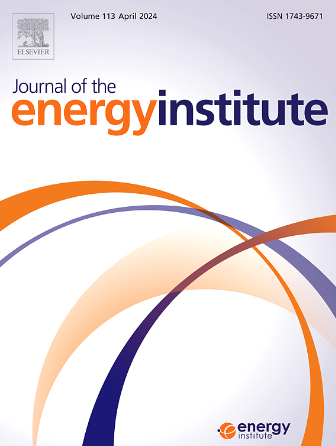Hydrothermal bio-oil yield and higher heating value of high moisture and lipid biomass: Machine learning modeling and feature response behavior analysis
IF 5.6
2区 工程技术
Q2 ENERGY & FUELS
引用次数: 0
Abstract
The yield and higher heating value (HHV) of bio-oil products are significant performance parameters for the hydrothermal conversion of high-water and high-lipid biomass. Machine learning (ML) modeling prediction is a fast and convenient means of obtaining performance parameters. An informative dataset with 243 samples was prepared, and two highly adapted ML algorithms were used: Random Forest (RF) and Extreme Gradient Boosting Tree (XGBoost). It is interesting to note that the developed ML models demonstrated great prediction ability; for example, the regression coefficient () of the XGBoost model for yield and HHV prediction was as high as 0.942 and 0.940, respectively. Furthermore, partial dependence plots (PDP) and SHapley Additive exPlanations (SHAP) interpretability methodologies were adopted to address the main contributions of the feature identification and response behavior analysis of the features. The results demonstrated that the biomass composition had the greatest effect on bio-oil yield, with fat contributing up to 40 %. In contrast, the elemental composition had the most significant effect on the HHV of bio-oil. Notably, hydrogen content affected the HHV of up to 4.5 units. The interaction response behavior showed that the interaction of the process parameters with feedstock properties was most common and significant. The information obtained from the response mechanism can be used to enhance the subsequent hydrothermal fuel preparation process for bio-oils.
高水分和高脂肪生物质的水热生物油产量和更高的热值:机器学习建模和特征响应行为分析
生物油产品的产量和较高的热值(HHV)是高水和高脂生物质水热转化的重要性能参数。机器学习(ML)建模预测是获取性能参数的一种快速便捷的方法。我们准备了一个包含 243 个样本的信息数据集,并使用了两种高度适应的 ML 算法:随机森林(RF)和极端梯度提升树(XGBoost)。值得注意的是,所开发的 ML 模型表现出很强的预测能力;例如,XGBoost 模型对产量和 HHV 预测的回归系数(R2)分别高达 0.942 和 0.940。此外,针对特征识别和特征响应行为分析的主要贡献,还采用了部分依存图(PDP)和SHapley Additive exPlanations(SHAP)可解释性方法。结果表明,生物质成分对生物油产量的影响最大,其中脂肪的贡献率高达 40%。相比之下,元素组成对生物油的 HHV 影响最大。值得注意的是,氢含量对 HHV 的影响高达 4.5 个单位。交互响应行为表明,工艺参数与原料特性之间的交互作用最为常见和显著。从响应机制中获得的信息可用于改进生物油的后续水热燃料制备工艺。
本文章由计算机程序翻译,如有差异,请以英文原文为准。
求助全文
约1分钟内获得全文
求助全文
来源期刊

Journal of The Energy Institute
工程技术-能源与燃料
CiteScore
10.60
自引率
5.30%
发文量
166
审稿时长
16 days
期刊介绍:
The Journal of the Energy Institute provides peer reviewed coverage of original high quality research on energy, engineering and technology.The coverage is broad and the main areas of interest include:
Combustion engineering and associated technologies; process heating; power generation; engines and propulsion; emissions and environmental pollution control; clean coal technologies; carbon abatement technologies
Emissions and environmental pollution control; safety and hazards;
Clean coal technologies; carbon abatement technologies, including carbon capture and storage, CCS;
Petroleum engineering and fuel quality, including storage and transport
Alternative energy sources; biomass utilisation and biomass conversion technologies; energy from waste, incineration and recycling
Energy conversion, energy recovery and energy efficiency; space heating, fuel cells, heat pumps and cooling systems
Energy storage
The journal''s coverage reflects changes in energy technology that result from the transition to more efficient energy production and end use together with reduced carbon emission.
 求助内容:
求助内容: 应助结果提醒方式:
应助结果提醒方式:


